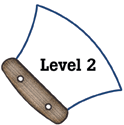
Alaska Science
Key Element D4
A student who meets the content standard should evaluate the scientific and social merits of solutions to everyday problems.
 |
Alaska Science A student who meets the content standard should evaluate the scientific and social merits of solutions to everyday problems. |
|
Performance Standard Level 2, Ages 8–10
|
|
|
|
Sample Assessment Ideas
|
Standards Cross-References
|
||
|
National Science Education Standards Scientific inquiry and technological design have similarities and differences. Scientists propose explanations for questions about the natural world, and engineers propose solutions relating to human problems, needs, and aspirations. Technological solutions are temporary; technologies exist within nature and so they cannot contravene physical or biological principles; technological solutions have side-effects; and technologies cost, carry risks, and provide benefits. (Page 166) Perfectly designed solutions do not exist. All technological solutions have trade-offs, such as safety, cost, efficiency, and appearance. Engineers often build in back-up systems to provide safety. Risk is part of living in a highly technological world. Reducing risk often results in new technology. (Page 166) Technological solutions have intended benefits and unintended consequences. Some consequences can be predicted, others cannot. (Page 166) |
Benchmarks Scientific laws, engineering principles, properties of materials, and construction techniques must be taken into account in designing engineering solutions to problems. Other factors, such as cost, safety, appearance, environmental impact, and what will happen if the solution fails also must be considered. (Page 55) Technologies often have drawbacks as well as benefits. A technology that helps some people or organisms may hurt others—either deliberately (e.g., weapons) or inadvertently (e.g., pesticides). When harm occurs or seems likely, choices have to be made or new solutions found. (Page 55) |
|
Table of Contents | Return to Alaska Native Knowledge Network